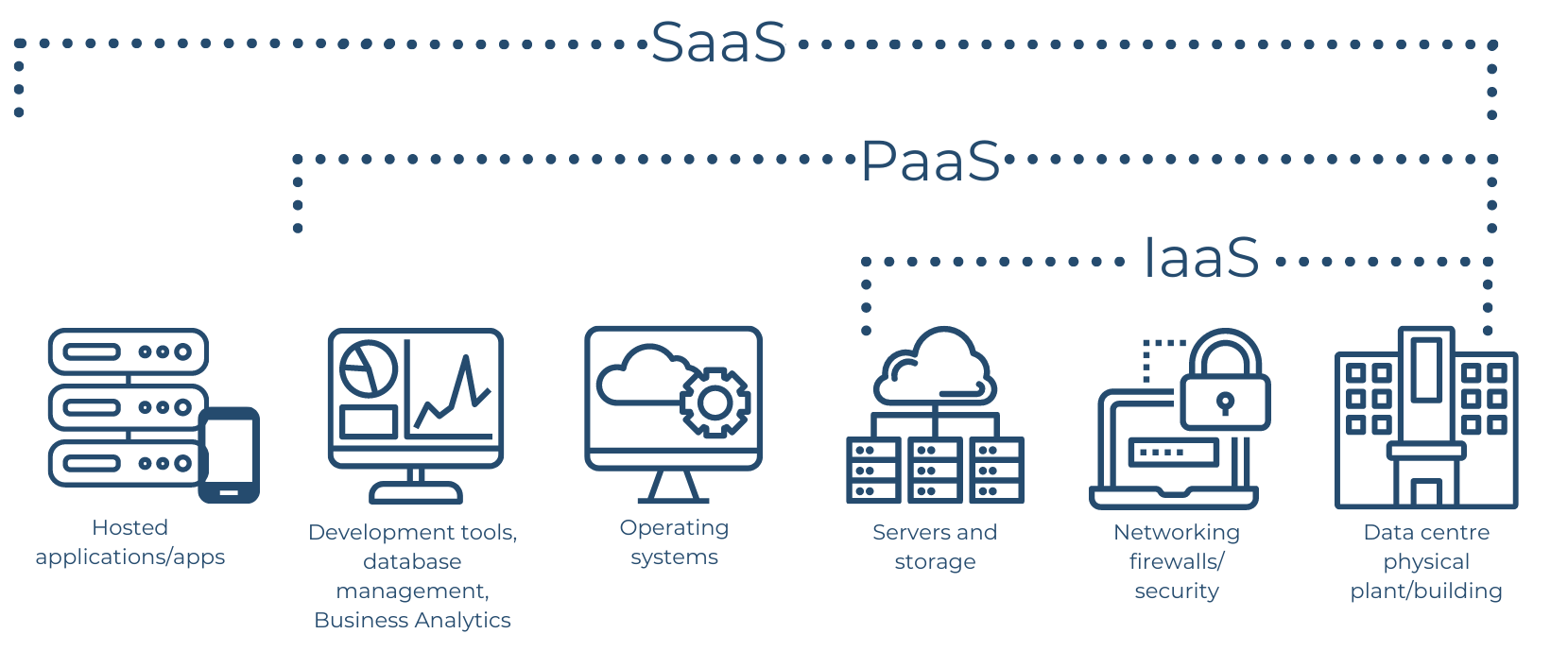Cloud Strategy: the 4 most important topics to take into account
IT is intended to make a clear contribution to your company’s objectives. In addition, IT will have to be secure and compliant with current legislation. Which strategy will suit your company when it comes to deciding to migrate to the cloud? Has your company developed the right strategy to obtain business value? Do you have the resources required within your company to design the accurate architecture suiting the needs of your company?
In this article, 4 of the main topics for your organization before deciding on a Cloud migration will be clarified.
1. Alignment
How do you ensure that IT offers optimal support to your organization? This will only be successful if operational management and IT tech are aligned. Possible issues you can encounter are: do Operational management and Tech have the same goals? Is the focus on improving reliability and safety or on accelerating and innovating? Your IT has already been implementing new innovative techniques, while the operational part of your organization is complaining about the performance of the systems.
Business and IT must align: the core values of IT must contribute to the organization now and in the future.
2. Foundation
Once the organization’s future policy has been mapped out and the themes are clear, a start can be made on setting up the Cloud foundation: the architecture. Make sure that plans are made for Cloud Readiness.
Cloud computing consists of the following components: applications, platforms, and infrastructure. First a decision will have to be made regarding the responsibilities of all these cloud components. Which responsibilities do you retain within your company, which do you transfer to the Cloud supplier?
Cloud Computing is classified into three categories:
- Infrastructure as a Service (IaaS)
- Platform as a Service (PaaS)
- Software as a Service (SaaS)

Should you require the cloud infrastructure for network and or storage servers and virtualization by means of a supplier and, for example, run your platform with applications and data yourself, then Infrastructure as a Service will do. Should your data and applications platforms also run through a Cloud provider, then you will have to use PaaS and SaaS.
How can the transition take place as smoothly as possible? These are 2 ways to migrate to the Cloud:
Lift & Shift
With the Lift & Shift method, you approach the migration in a “bottom-up” way, working up from the bottom layer of the infrastructure. Quistor will migrate the on-premises data center to the Oracle Cloud.
Top-down migration
But other approaches are also possible. For example, with a top-down migration, you focus much more on strategy and evaluation. With this approach, you first look at where applications should land on the Platform as a Service, Infrastructure as a Service or Software as a Service layer.
Only then do the network and/or workload dependencies come into play.
3. Ensure continuous Cloud Innovation
DevOps:
Implementing DevOps development method in the Cloud structure, means that IT is no longer a standalone, operational organizational entity.
Different people work together in teams to develop an application (IT technicians, developers, product managers), meaning the entire team is responsible for the storage of that application, as well as for the networking side, the virtual machines, the database maintenance, and security.
In this DevOps way, you can design your cloud foundation more effectively and faster.
Agility:
What requirements will your Cloud have to meet in the future to facilitate that way of working? Which innovation routes should Cloud be able to support to continuously meet customer requirements? Core values that may be important now will be less innovative in the future. Rapid technological development and innovation require a high degree of agility and resilience within the IT environment.
By embracing and migrating the Cloud using a flexible and comprehensive Cloud platform, (IaaS, PaaS, SaaS), you ensure that your structures and organizational model become Agile and flexible enough to quickly move with the market.
A digital transformation involves many more topics than just planning the actual migration. Your business focus should be clear from the start (focus on organizational growth only or is continuous innovation key?). The constantly changing role of IT within your organization must be clearly defined. There will have to be a shift from executive management to a stronger directing role.
If you want to guarantee the innovation capacity and speed that suits your organization in the future, you will have to prepare your cloud strategy and digital transformation plan now.
Quistor is more than happy to help and advise you with that.
4. Create your organizational structure cloud ready, From Execution to Strategy
In the classic on-premise world, IT managers are primarily responsible for managing and executing IT, managing daily incidents, and extinguishing fires. With the arrival of the Cloud, IT managers can finally move back to that desired strategic level, setting out strategic lines in the Cloud.
After a cloud migration, administrators no longer must worry about hardware contracts, data center management and access rights. Their focus will now be on cloud functionalities and DevOps. This way, the organizational strategy is better operationalized, and IT ensures that the cloud is used optimally.
Do you want to know more about how Quistor can be of help with your Cloud Strategy and Cloud migration? Please contact us here or send an email to info@quistor.com.


